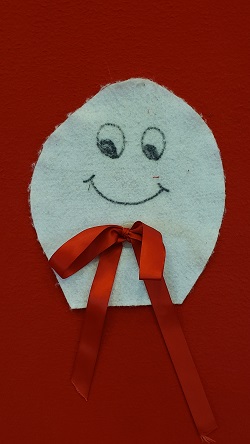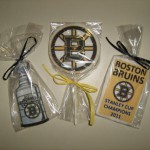I’ve always been a proponent of process art, though I didn’t know that official term until about ten years ago. When I was growing up, my mother – who was a Kindergarten through third grade teacher and also an artist – would talk to me about teaching art to young children, and about how important it is to not limit children by presenting them with a set, teacher-made example that shows the children there is only one correct way to make art, thereby squelching creativity and artistic exploration.
Her lessons stayed with me through my time as a camp counselor in my late teens and early twenties, and through my multiple regular babysitting gigs through high school and college, and even through my time teaching special education students at an elementary school, though I was responsible for teaching them reading, writing, and phonology and not art. And when I became a children’s librarian a little over fourteen years ago, I knew I finally had the venue to really engage young children with art in the most creative, explorative sense.
As I tried to figure out how to implement this type of art, I searched the library catalog and the internet for inspiration…and somehow the first search term that I entered turned out to be the correct one: process art. Perhaps my mother had used this term, and I just don’t remember her saying those words, or perhaps I was able to distill the concept down to its bare essentials, but however I got there, I was able to find some amazing materials available for use in my programs. The most useful resource that I found in that initial search, and which I still use regularly today, is MaryAnn Kohl’s book Preschool Art: It’s the Process, Not the Product. Along the way I’ve found some other print resources that are hugely useful, such as Asia Citro’s books and also Meri Cherry’s books, as well as some blogs that focus on process art and preschool education.
For yesterday’s Art & Stories for 4’s & 5’s I needed a process art project that was simple but wintery, since I was doing a themed winter storytime with the group. The books I read yesterday were The Storm Whale in Winter by Benji Davies and Here Comes Jack Frost by Kazuno Kohara, so I wanted a project that was complementary to the books. Happily, I found a wonderful, easy project on the Stay At Home Educator blog that used materials I had readily available.
I gave each child a nice thick piece of watercolor paper, a large paintbrush, and a palette loaded with three colors of paint: white, royal blue, and turquoise. It was great to see how different each of their paintings turned out – all in wintery blues and whites, but each completely unique. As each child finished the painting part of their project, I handed them a bottle of white glue and let them have at it squeezing glue on their paintings. Interestingly, the one six year old in the group kept painting far longer than the other children; developmentally, she was in a different place when it came to the painting portion of the project.
So much glue was squeezed on, in lots of cool formations: some large and goopy blobs, some delicate gluey tracings, and one that was just glue along the bottom of the page while the blues of the painting covered the top of the page. And then when they were each ready I passed them a small cup with a couple of tablespoons of sea salt in it (I didn’t have Epsom salt on hand, and the sea salt worked quite well). The group had a great time spreading salt over their paintings, and it was also great fine motor skill practice and problem solving, as some children delicately pinched and sprinkled bits of salt over their paintings, others put the salt in the palm of their hands and shook it over the painting, and still others used the cup to shake the salt. Some of the children even took it a step further and shook the salt around their papers and then funneled the excess salt back into their yogurt cups. (Others, of course, went for the “as much salt as possible approach” and pillaged the discarded salt of their peers to enhance the large sparkly salt pile on their own painting.)
As the children were nearing the end of their creative process I called in their grownups to come see what they had made. This is my favorite part, especially with this group of intuitively awesome grownups, since all kinds of great conversations take place between the children and their adults: “Tell me what you did here!” “I love the colors that you used – how did you make that blue?” “The sparkles are so beautiful – what are they? Salt? Wow!!!”
All in all, it was a wonderful last preschool art storytime of this decade, and yet another affirming process art experience.


